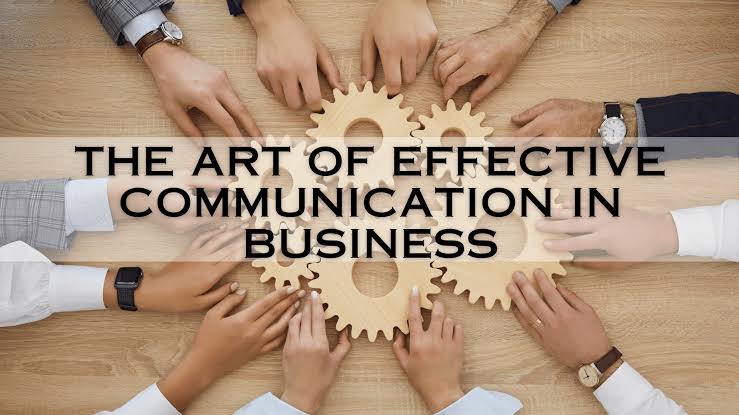Good communication is key to running a successful business. In today’s fast-changing world, especially in July 2025, being able to speak clearly, convincingly, and quickly is more important than ever. With remote work, digital tools, diverse teams, and higher customer demands, businesses can’t just use old ways of talking.
They need to use new tools and methods that focus on being clear, understanding others, and responding quickly. Effective communication in business combines skill, understanding, and technology. Getting good at it can greatly boost productivity, creativity, and relationships at every level.
Understanding the Foundations of Business Communication
The foundation of effective business communication begins with understanding its purpose and scope. Unlike casual conversation, business communication is goal-oriented—it is meant to deliver information, influence decisions, and build professional relationships. Whether it’s between colleagues, with clients, or across departments, the tone, structure, and content must align with the organizational goals.
Clarity and conciseness are key attributes of strong business communication. Messages should be easy to understand without ambiguity or excessive jargon. When team members understand expectations and objectives from the outset, errors are reduced, and productivity increases.
Moreover, communication must be appropriate to the medium. A quick instant message may suffice for day-to-day coordination, but more detailed or sensitive issues often require emails, video calls, or face-to-face meetings. Knowing when and how to use each channel is part of mastering this art.
Embracing Active Listening and Feedback
In 2025, one of the most valued business skills is not just speaking effectively, but listening actively. Active listening involves fully concentrating on the speaker, understanding their message, and responding thoughtfully. It requires being present and eliminating distractions, especially during virtual meetings where multitasking is tempting.
When team members feel heard, they are more likely to engage, share innovative ideas, and remain loyal to the organization. Managers who practice active listening can also identify underlying issues in the workplace before they escalate.
Feedback plays a crucial role in business communication. Constructive feedback encourages growth, corrects mistakes, and reinforces good performance. In successful businesses, feedback flows in both directions—leaders are open to receiving it as much as they are expected to give it. Organizations that create feedback-rich cultures tend to see faster development and stronger team cohesion.
Leveraging Technology for Better Communication
Technology now sits at the heart of business communication, and knowing how to use it effectively can set businesses apart. Tools such as Microsoft Teams, Zoom, Slack, and Google Workspace have become staples in both small businesses and global corporations.
In 2025, AI-powered communication tools are gaining momentum. Applications like Otter.ai for meeting transcriptions, Grammarly Business for writing refinement, and ChatGPT plugins for customer service automation are being used to streamline and enhance messaging.
Yet, the misuse of technology can cause communication overload. Endless messages, redundant notifications, and poorly organized channels often lead to confusion. Businesses must establish clear digital communication protocols and train employees to use tools responsibly and efficiently.
Cross-Cultural and Inclusive Communication
As global teams become more common, cross-cultural communication has become a vital skill. Misunderstandings often arise from differences in language, cultural norms, and business etiquette. What may seem polite and direct in one culture can come off as offensive or vague in another.
To avoid such pitfalls, businesses should invest in cross-cultural training and promote inclusivity in language. Using plain English, avoiding idiomatic expressions, and being sensitive to cultural differences help ensure everyone feels respected and understood.
Inclusive communication also involves acknowledging and accommodating people with different communication needs, such as those with disabilities or neurodiverse conditions. Simple adaptations like using captions on video calls or providing written summaries after meetings can make communication accessible to all.
Written vs. Verbal Communication: Choosing the Right Approach
Deciding between written and verbal communication is an essential aspect of effective business interaction. Written communication, including emails, reports, and memos, is ideal for documentation and long-term reference. It’s especially important for legal and contractual matters, where every word can carry weight.
Verbal communication, through phone calls or meetings, is better suited for discussions that require immediate feedback, brainstorming sessions, or delicate conversations that benefit from tone and body language. In 2025, video calls have become the default option for bridging remote gaps, offering the benefits of face-to-face interaction without geographical limitations.
The key lies in matching the content with the format. A well-written message can save time and ensure clarity, while a timely phone call can prevent misinterpretation and speed up decision-making.
The Role of Emotional Intelligence in Communication
Emotional intelligence, or EQ, plays a significant role in how effectively one communicates in business settings. High-EQ individuals are better at understanding the emotions of others, managing their own reactions, and building rapport quickly.
In business environments, particularly in leadership positions, being emotionally intelligent means remaining calm under pressure, showing empathy during conflict, and adjusting your communication style based on the emotional state of your audience. A manager who recognizes signs of burnout in an employee and addresses it with compassion will always achieve more than one who relies solely on directives.
Emotional intelligence also improves negotiation skills, customer service, and crisis communication. In a world where automation handles routine messaging, human emotional insight is what makes communication impactful.
Measuring and Improving Communication Effectiveness
Effective communication is not a one-time achievement but a continuous process that must be refined. Businesses should regularly evaluate how well their communication strategies are working. Surveys, feedback forms, and performance reviews can reveal gaps and areas for improvement.
Analytics tools built into communication platforms now allow companies to track engagement rates, message response times, and internal feedback loops. This data helps businesses make informed decisions about their internal and external communication tactics.
Moreover, offering training in public speaking, writing, negotiation, and cross-functional communication equips employees with the tools to thrive. Businesses that prioritize communication development outperform those that treat it as an afterthought.
Conclusion: Making Communication a Strategic Priority
In the dynamic business landscape of 2025, communication is more than just exchanging information—it is a strategic priority that influences every aspect of operations. From team collaboration and client relations to brand reputation and crisis management, how businesses communicate defines their success.
By building a foundation of clarity, encouraging active listening, using the right tools, and embracing emotional intelligence, companies can create communication systems that inspire trust, drive results, and support growth. In the end, mastering the art of business communication is about connecting with people—clearly, respectfully, and with purpose.



